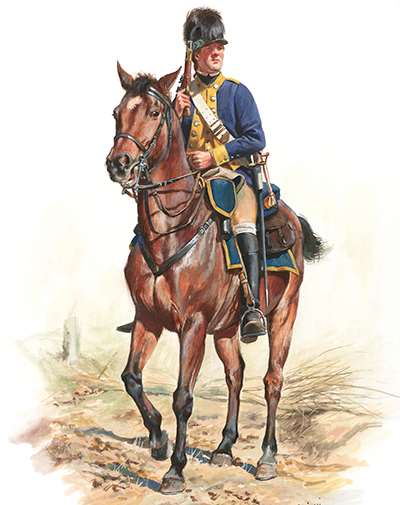William Bonner was born in 1756 in Hertford County, North Carolina. The Bonner family was already well established in the region, having first immigrated from Gloucestershire, England to James City, Virginia about 1647.
In 1775, when he was about 19 years old, William met and married Elizabeth Richards and they soon moved to Rowan County, more than 300 miles to the west, on the North Carolina frontier.
In late summer 1776, at the age of 20, William enlisted in the 1st Salisbury District Minutemen, 2nd Regiment Rowan County militia as an infantry private. During his first three-month tour, William was in Capt. Robert [William] Alexander’s Company and Colonel Francis Locke’s Regiment. William and his regiment were part of the approximately 1,700 troops led by Brigadier General Griffith Rutherford during the Cherokee Expedition into Indian lands on the North and South Carolina frontier. Their goal was to confront the Cherokee, who were allied with the British and attacking colonial settlements on the border of Indian territory. The Cherokee were defeated in October 1776 and, according to his deposition for a pension, “[I] again entered the service as a volunteer upon a three-months tour under Captain Jonathan Potts and Colonels Hart and Hagens – this tour was against the British and Tories.”
Later, in summer 1780, William reenlisted in the militia but now with Capt. Robert McKnight’s Company and Colonel Robert Irwin’s Mecklenburg County Regiment, part of Brigadier General Thomas Sumter’s SC Brigade of militia. The Regiment marched to South Carolina, and on August 6, 1780, William participated in the Battle at Hanging Rock, a successful attack on one of a number of British outposts in the SC interior established to recruit Loyalists and suppress Patriot dissent.
After an interlude of service, from September 1780 through April 1781, William reenlisted on March 19, 1781 with South Carolina State Troops, serving this time with the 3rd Regiment SC Light Dragoons – also known as [Colonel William] Polk’s Regiment of Light Dragoons (dragoons moved on horseback and could fight mounted or on foot, acting as infantry).
During this twelve-month enlistment, William and his unit participated in several battles, including Quinby’s Bridge and Shubrick’s Plantation on July 17, 1781, Eutaw Springs on September 8, 1781, and Fort Dorchester on December 1, 1781.
William’s service spanned the duration of the Revolutionary War, beginning with his first enlistment in 1776, and ending with his discharge on April 7, 1782, following British General Lord Cornwallis’ surrender at Yorktown, Virginia on October 19, 1781.
William lived out his later years in Tennessee and Kentucky, passing away at the age of 78 on December 19, 1834, and is buried in Murray, Kentucky.


